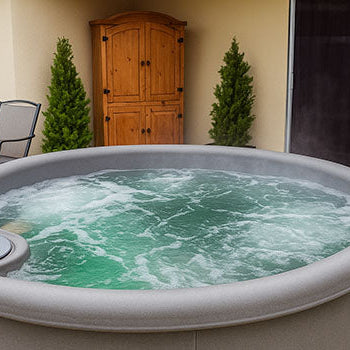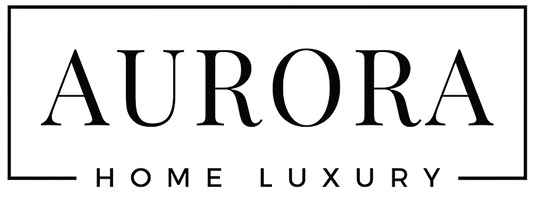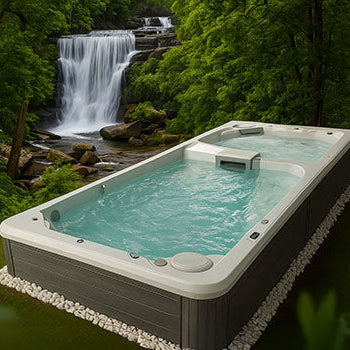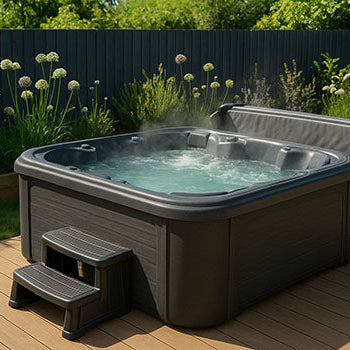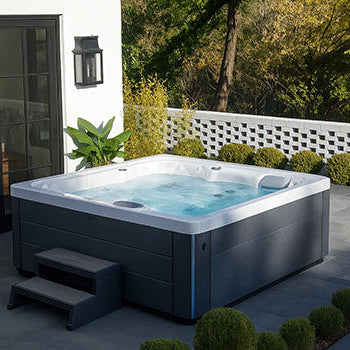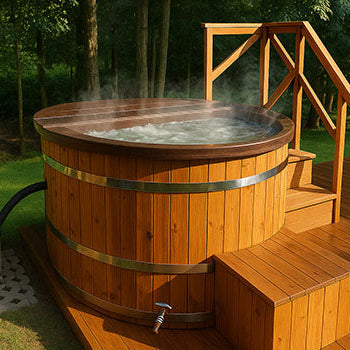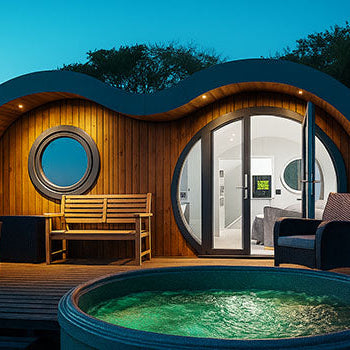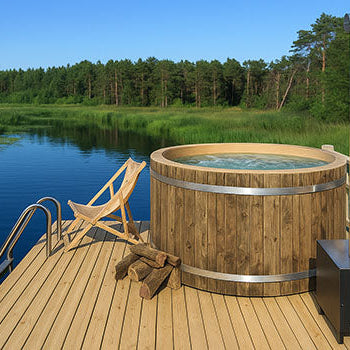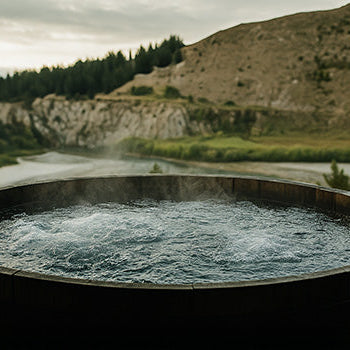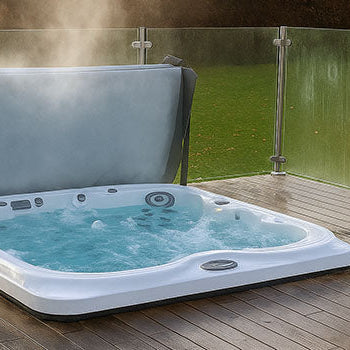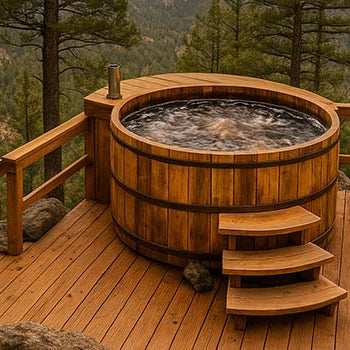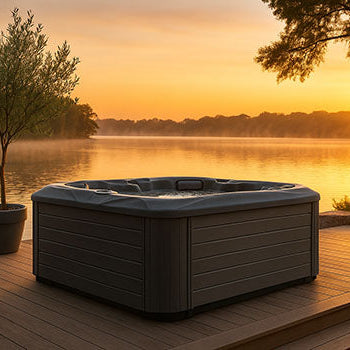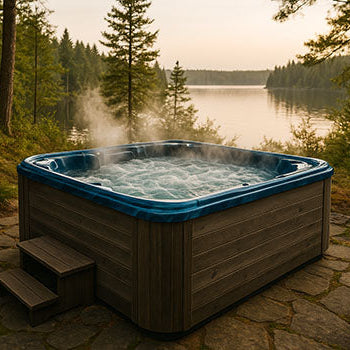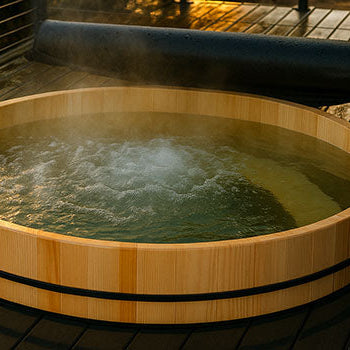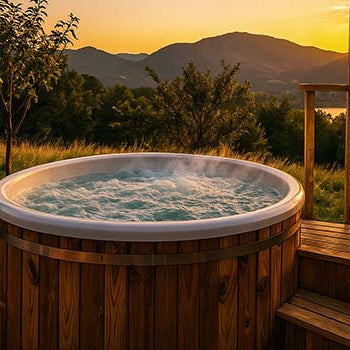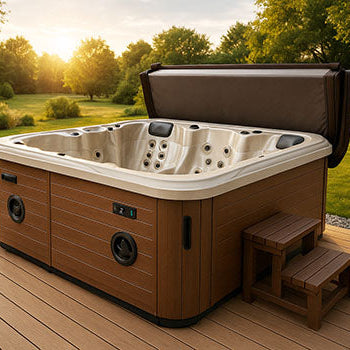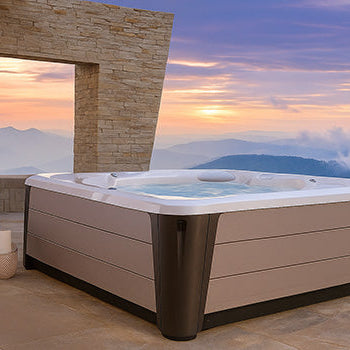Absolutely, hot tubs can work wonders for post-workout soreness. Whether you're a gym regular or you just tackled your first HIIT session, easing into a steaming soak can feel like heaven. The warm water helps boost circulation, ease tension, and speed up recovery. It doesn’t matter if it’s a sleek acrylic model, a rustic wooden tub, or a rotomoulded spa parked in your backyard; your muscles will thank you. So, are hot tubs good for muscle recovery? Yes, they are. And once you understand how to use them wisely, they could become your new favourite post-workout ritual.

Understanding Muscle Soreness After Exercise
Delayed Onset Muscle Soreness (DOMS) Explained
That "ouch" you feel the day after squats? That’s DOMS. Delayed Onset Muscle Soreness typically shows up 12 to 48 hours after unfamiliar or intense workouts. It’s your body’s way of adjusting and strengthening itself after being pushed a little harder than usual. You may not love the limp or the wince, but it’s a sign your muscles are working.
The Role of Micro-Tears and Inflammation
During exercise, your muscles develop microscopic tears. This damage triggers inflammation, sending healing cells to repair and rebuild. The result? Stronger muscles. But with that progress comes temporary stiffness, swelling, and soreness. Think of it as renovation pain, you’re under construction.
Importance of Recovery for Performance and Injury Prevention
Recovery is where the magic happens. Skipping it or rushing it can lead to burnout, injury, or poor performance. Proper rest helps your muscles grow back stronger and more resilient. Without it, you're just digging a deeper hole with every workout. Recovery isn’t optional if you want to perform long-term.
How Hot Tubs Can Aid Muscle Recovery
Increased Blood Flow: Delivering Nutrients and Removing Waste Products
Warm water gets your blood flowing fast. When your blood vessels dilate, oxygen and nutrients flood your muscles while waste like lactic acid clears out. It’s like a clean-up crew for your body. Improved circulation is key to faster recovery.
Heat Therapy: Relaxing Tight Muscles and Reducing Stiffness
Heat has a soothing effect on tight or tired muscles. The warmth helps fibres loosen and lengthen, reducing that stiff, post-leg-day walk. It also lowers stress hormones, helping both your body and mind unwind. This makes it easier to bounce back for your next session.
Potential Reduction in DOMS Perception
Hot tubs might not erase DOMS, but they can take the edge off. That feeling of weightlessness combined with warm pressure can make soreness more manageable. Even if the healing process stays the same, you feel better, and that matters when motivation is low.
Buoyancy: Gentle Relief for Tired Muscles and Joints
Floating gives your joints a break. When you’re submerged, gravity takes a back seat, which reduces stress on muscles and tendons. This is especially helpful for those recovering from intense workouts or managing joint pain. It’s rest, without complete stillness.

Optimising Hot Tub Use for Post-Workout Recovery
Timing Your Soak: Allow for Cool-Down After Intense Exercise
Don’t jump straight from deadlifts to a hot tub. Let your body cool down first, at least 15 to 30 minutes. This prevents overheating and gives your heart rate time to settle. A post-cool-down soak is safer and more effective.
Ideal Water Temperature for Recovery
Keep it between 36–38°C. This range is warm enough to encourage muscle relaxation but cool enough to avoid fatigue or dehydration. Anything above 40°C can stress your body. A reliable thermometer helps keep things in check.
Recommended Soak Duration
Set a timer for 15 to 20 minutes. That’s the sweet spot. It’s long enough for heat to do its thing but short enough to avoid risks like dizziness or overheating. Longer isn’t always better when it comes to heat therapy.
Combining with Gentle Stretching (If Appropriate)
Stretching after a soak can boost flexibility. Your muscles are already warm, so movements feel smoother. Keep stretches light and slow, this isn’t the time to go full splits. A few easy moves can enhance relaxation and help maintain range of motion.
Hot Tubs vs. Cold Therapy (Ice Baths) for Recovery
Benefits of Cold Therapy (Reducing Acute Inflammation/Swelling)
Ice baths are great immediately after intense activity. They help reduce swelling and numb sharp aches. Cold narrows blood vessels, limiting inflammation. Just be prepared for the initial shock. They're effective but not cosy.
Benefits of Heat Therapy (Improving Blood Flow, Relaxation)
Heat works better a few hours after your workout. It opens vessels, enhances blood flow, and helps your muscles relax. Plus, it just feels good. Warmth can help shift your body into recovery mode.
Contrast Therapy (Alternating Hot and Cold)
Switching between hot and cold water is known as contrast therapy. It’s like a circulation workout for your body. Alternating temperature can help reduce fatigue and stimulate faster repair. If you have both options, it might be worth trying.
Choosing the Right Method for Your Needs
Cold is best right after heavy lifting or injury. Heat is ideal for the next day’s soreness. Try both and see what works for you. Personal preference plays a big role in recovery success.
Important Considerations
Staying Hydrated During and After Soaking
You sweat in hot tubs, even if you don’t notice. Drink water before, during, and after your session. This keeps your body cool and your muscles hydrated. Recovery only works if you’re well-hydrated.
Listening to Your Body's Response
Pay attention to how you feel. If you get dizzy, overheated, or uncomfortable, cut it short. Your body will tell you when something isn’t working. Recovery should feel good, not forced.
Not a Substitute for Proper Nutrition, Rest, and Stretching
Hot tubs help, but they’re not a magic fix. You still need solid sleep, good food, and proper movement. Think of hot tubbing as a bonus tool, not the whole toolkit. Balance is everything.

Conclusion: Hot Tubs Can Be a Valuable Tool for Muscle Recovery When Used Correctly
So, are hot tubs good for muscle recovery? Yes, when used the right way, they can help you heal faster, feel better, and train smarter. From increased circulation to reduced soreness, the benefits are clear.
Whether you’re unwinding in an acrylic spa, soaking in a wooden tub under the stars, or relaxing in a rotomoulded model by the patio, it’s all about smart recovery. Don’t overdo it, stay hydrated, and pair your soak with other good habits. Your muscles will thank you, and your next workout will feel that much easier.
